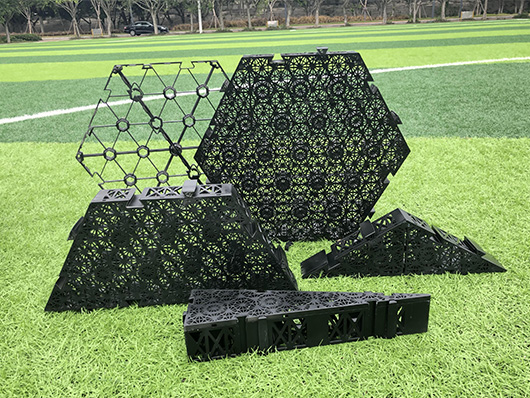
Applications of Urban Rainwater Infiltration & Attenuation
Urban stormwater attenuation and infiltration system, as the effective stormwater storage system, expands the options and flexibility of the HOENSOEY products. It provides reliable and effective water source control through rainwater retention, attenuation, or infiltration at shallow levels.
Shallow development methods reduce the expensive cost of pumping equipment. The urban stormwater attenuation and infiltration system has a lower impact on the environment, and it requires less excavation and less labor. The stormwater storage system reduced the amount of fill and the amount of crushed stone transported, resulting in lower construction costs.
The urban stormwater attenuation and infiltration system can fully replace the traditional granular gradients at the bottom of the underpass. It provides a unique, high-strength, consistent structural raft that complies with general standards, the guidelines for the design of permeable pavements constructed from concrete paving stones, natural stone slabs and clay bricks.
In the stormwater storage system, the void ratio reaches 95 percent, which greatly improves stormwater attenuation capacity of the road. Moreover, it reduces the road aggregate. The stormwater storage system is suitable for asphalt pavement, brick pavements or concrete pavement, and various traffic conditions from national highways to freeways. These products have high compression strength and can be fully connected together by their own integrated snap systems.
“…Underground Rainwater Storage System, Modular Rainwater Harvesting System, Underground Drainage Module, HOENSOEY Cells…”
In addition to the following scenarios, HOENSOEY storm modules are also applicable to scenarios such as stage construction, display stands, sound-absorbing cushions, stairs, etc.
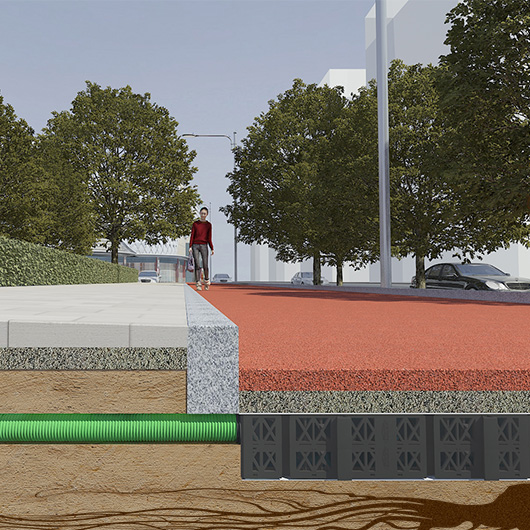
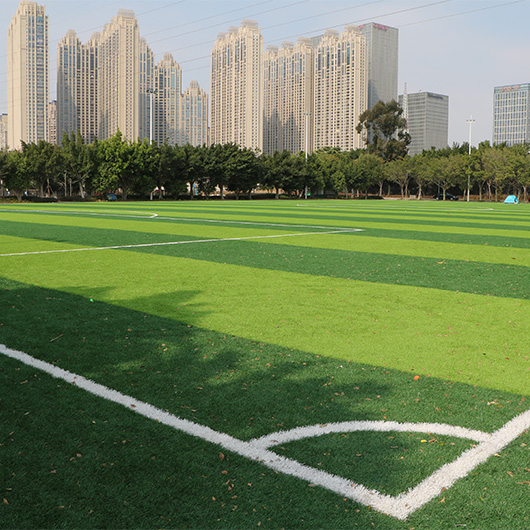
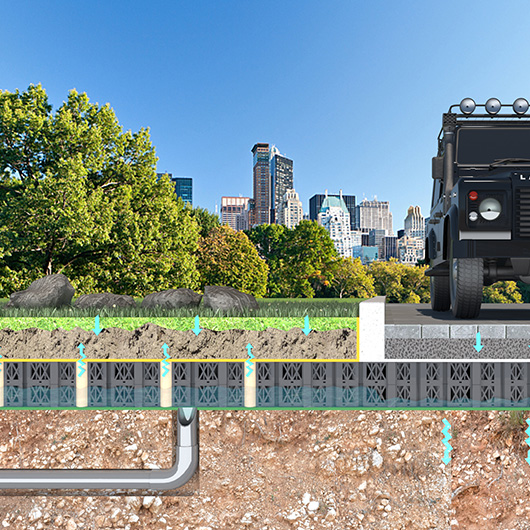
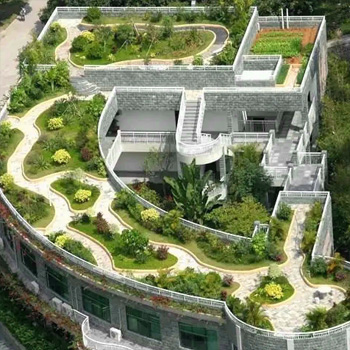
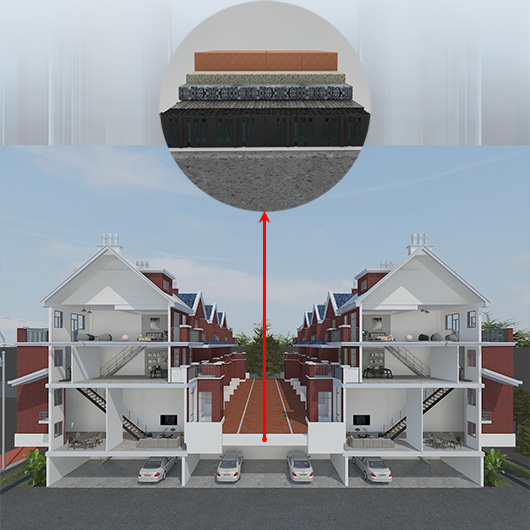
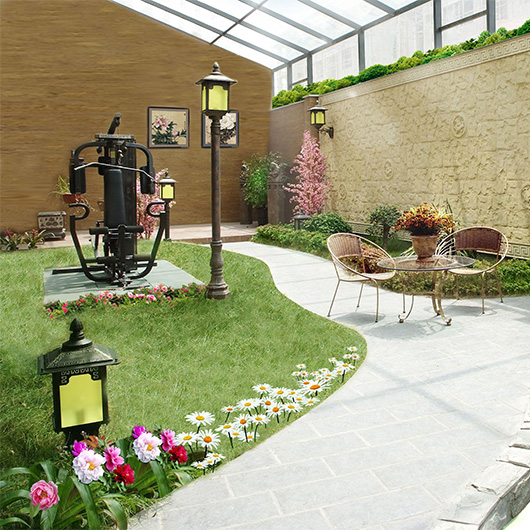
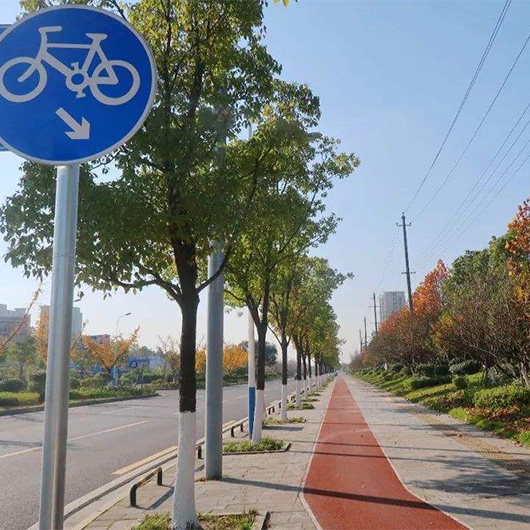
The technology of urban rainwater shallow underground storage and Infiltration
There is a serious shortage of water resources. Strengthening the comprehensive use of rainwater resources is an important measure to effectively improve the urban water environment and relieve urban water stress. In addition, it is also an important measure to conserve urban soil and water.
Strengthening the study and research to technology and application of the urban rainwater shallow underground storage and infiltration can significantly improve the ecological goals of urban systems under the condition of constant investment costs.
Currently, sunken green spaces, permeable pavement, and increasing green areas are important ways to promote rainwater storage and Infiltration. However, for densely populated cities, the above measures have certain limitations in terms of specific usage processes. It is important to actively search for economical, reasonable and feasible technologies for urban rainwater utilization. To promote industrialization and specialization of rainwater utilization, effective water treatment is one of the priorities that should be urgently addressed.
Japan is a model in Asia for its emphasis on urban rainwater utilization. Since the 1980s, to alleviate water shortage and flood control pressures. Japan has promoted rainwater utilization technology nationwide and actively implemented rainwater storage and infiltration schemes. Until now, Japan's rainwater utilization projects have been gradually standardized. Currently, there are three main ways of utilizing rainwater in Japanese cities:
First, regulation, storage, and infiltration;
Second, regulation, storage and purification.
Third, artificial or natural bodies of water are used for the regulation and storage of rainwater.
All of these ways can provide environmentally friendly water and improve the water ecological environment in cities, residential areas and parks.
Technologies for urban stormwater attenuation and infiltration system rainwater make full use of shallow groundwater as infiltration and short-term storage facilities without changing the function of traditional land use. The shape, size and location of storage devices can be set flexibly according to the specific requirements of different cities. At the same time, a water storage facility made of porous materials does not require a specific shape. Shallow underground water storage and percolation techniques for urban rainwater have a wide range of applications. Shallow underground water storage can be fully utilized to effectively address problems that are difficult to address with conventional storage and seepage.
Overall, urban stormwater attenuation and infiltration System has three functions:
First, it has a water-saving feature. Rainwater is used to flush toilets and to water lawns and ground surfaces. In addition, it does help with water feature replenishment, cooling water circulation, and fire water, which saves city tap water.
Second, the stormwater storage system does help to restore the water and ecological environment. It strengthens the infiltration of rainwater and increasing the water content of the soil. Rainwater can be used for recharge to raise groundwater levels. In addition, it can improve the water environment and the ecological environment.
Third, it has a rainwater regulation function. Increased stormwater infiltration into soil and storage of stormwater runoff reduces the flow into stormwater drainage systems. In this way, it improves the reliability of the urban flood drainage system and reduces urban flooding.
HOENSOEY Cell is a new type of rainwater storage honeycomb units with ultra-high compression strength and unique buckles. It is a core component in shallow surface water treatment systems.
